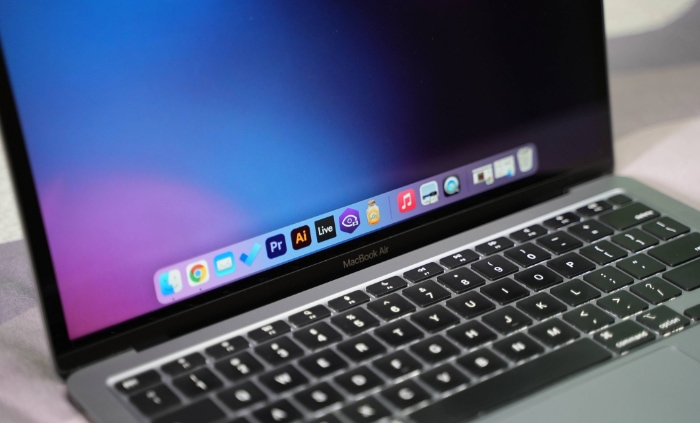“Your Computer is Low on Memory” on Mac: Quick Solutions

Memory is the backbone of any computer system, acting as a bridge between the processor and the vast data stored on the hard drive. Think of it as the workspace where your computer handles all active tasks, from opening an application to browsing multiple tabs on a web browser.
A sufficient amount of memory ensures smooth and swift operations, while its shortage can lead to noticeable lags, app crashes, and an overall frustrating user experience.
Mac users, renowned for their pursuit of efficiency and streamlined processes, are not immune to memory shortage issues. A frequent alert stating “Your computer is low on memory” is more than just a fleeting notification—it is a signal of a potential bottleneck in performance.
Understanding Computer Memory
Memory plays a foundational role in how our computers operate, affecting everything from basic tasks to complex software functions. But to truly grasp its significance, it's important to recognize the different types of memory and their individual roles within a system, especially in Macs.
What is Computer Memory?
Computer memory refers to the digital storage solutions that hold data, applications, and the operating system in a computer. Think of it as the short-term and long-term repositories of information that your computer needs for its day-to-day operations.
Differentiating Storage from RAM
Storage (Hard Drive/SSD):
- This is the long-term memory of your computer. Data saved here remains even when the computer is turned off. Modern Macs use SSDs (Solid State Drives) which are faster and more reliable than traditional hard drives.
RAM (Random Access Memory):
- Considered the short-term memory, RAM temporarily holds data that the computer actively uses or processes. Once the computer is restarted or shut down, the information in RAM is cleared out. It's crucial because it directly impacts the speed and efficiency of tasks.
Role of RAM in a Mac's Operation
When you launch an application on your Mac, it's loaded into RAM because accessing data from RAM is faster than from storage. The more RAM you have, the more applications and data your computer can handle simultaneously without a drop in performance.
However, when RAM fills up, the Mac has to resort to using a part of the storage as a makeshift RAM, known as “swap”. This process is slower, leading to noticeable performance issues.
Importance of Adequate Memory
Having ample memory ensures:
- Faster application launches and switching.
- Smooth multitasking without system lags.
- Optimal performance for memory-intensive tasks like video editing or gaming.
- Reduced reliance on swap space, thereby ensuring longevity of your Mac's storage.
Potential Challenges with Insufficient Memory
When a Mac is running low on memory:
- Applications might freeze or crash unexpectedly.
- Booting up and shutting down processes could be slower.
- Users might experience frequent system slowdowns, especially when multitasking.
- There's an increased risk of data loss if apps crash during important tasks.
By understanding these nuances of computer memory, Mac users can better anticipate and respond to any potential challenges, ensuring an uninterrupted and efficient computing experience.
Signs Your Mac is Low on Memory
Every Mac user values a smooth and responsive computing experience. However, as you continue to use your device, install more applications, and create files, there might come a time when your Mac begins to show signs of memory strain.
Recognizing these early indicators can make all the difference in maintaining your Mac's performance and longevity.
Recognizing the Warning Message
One of the most direct indicators is when macOS sends an alert saying “Your computer is low on memory.” This notification is a clear indication that your Mac is struggling with its current tasks and does not have sufficient RAM to operate efficiently.
Slow Performance or Lag
A lagging cursor or delayed response when clicking on applications and files can be a telltale sign. If tasks that used to be instantaneous now take a noticeable amount of time, it might be due to memory strain.
Frequent App Crashes
If applications suddenly close or become unresponsive, especially when multiple apps are open, this can signal a memory issue. Programs require RAM to run, and they can crash when there isn’t enough.
The Spinning Rainbow Wheel
Often referred to as the “beach ball of death, ” the rainbow spinning wheel frequently indicates that your Mac takes more time to process a task, possibly because of low available memory.
Activity Monitor Insights
The Activity Monitor on a Mac provides real-time data about system performance. By checking the Memory tab, users can view how much RAM is being utilized and which applications are consuming the most.
A significant amount of “Swap Used” suggests that the Mac is using its storage as a substitute for RAM, which isn't optimal for performance.
Audio and Video Glitches
For those frequently working with multimedia, audio dropouts or video playback stuttering can be indicative of memory constraints. These tasks are often memory-intensive, and glitches might surface when RAM is inadequate.
Overall System Instability
When there’s a lack of available memory, the overall stability of macOS can be compromised. This might manifest as random reboots, system errors, or even failure to boot up properly.
Being attentive to these signs helps Mac users to address memory issues proactively, ensuring their device remains responsive and efficient for a wide range of tasks.
Common Causes for Memory Shortage

Every piece of technology, no matter how advanced, has its limitations. For our Macs, memory is a critical component that, when stretched thin, can affect overall performance.
By understanding the common causes of memory shortages, you can make informed decisions to keep your Mac running efficiently.
Running Numerous Applications Simultaneously
Macs are known for their multitasking capabilities. However, every open application consumes a portion of your Mac's RAM.
The more programs running concurrently, the more memory is used, leading to potential shortages if many resource-intensive apps are open at the same time.
Memory-Intensive Applications
Certain programs, like video editing software, graphic design tools, and high-end gaming applications, demand a hefty amount of RAM. Running these apps, especially alongside others, can quickly consume available memory.
Excessive Browser Usage
Modern web browsers, while efficient, can be quite memory-hungry. Keeping dozens of tabs open, especially those with multimedia content or interactive web apps, can significantly strain your Mac’s memory.
Malware and Unnecessary Background Processes
Malicious software or malware can run unnoticed in the background, consuming memory resources. Additionally, some legitimate applications may have background processes that, while not essential, use up RAM.
Outdated macOS or Software
While software updates often bring new features and optimizations, running outdated versions of macOS or other applications can sometimes result in less efficient memory use.
Limited Physical RAM
Older Mac models or those with minimum configurations might have a smaller amount of RAM to begin with. As software demands grow over time, these systems can struggle to keep up without memory upgrades.
Inefficient Memory Management
Sometimes, the issue isn’t just about the amount of memory being used but how efficiently it's managed. Fragmented or inefficient memory allocation by certain apps can lead to apparent shortages even when there's still RAM available.
By identifying and understanding these common causes, Mac users can take steps to prevent or resolve memory shortages, ensuring a smoother computing experience.
How to Free Up Memory on Your Mac
Maintaining optimal memory usage is paramount for a smooth Mac experience. Over time, as tasks accumulate and applications run in the background, memory can become cluttered.
By adopting certain strategies, you can reclaim memory, boost performance, and maintain the health of your device.
Close Unnecessary Applications
One of the simplest ways to free up RAM is to close applications that are not in use. Ensure that you quit them completely rather than just closing their windows. You can use the Command + Q shortcut or right-click the app icon in the dock and select Quit.
Limit Simultaneous App Use
While multitasking is one of the Mac's forte, being judicious about the number of apps running at the same time can prevent memory strain. Consider focusing on one or two primary tasks and close apps that aren't essential to the task at hand.
Manage Browser Tabs and Extensions
Web browsers can be significant memory consumers, especially with multiple tabs open. Regularly review and close unnecessary tabs. Additionally, disable or remove browser extensions that you no longer use or need, as they can occupy valuable RAM.
Restart Your Mac Regularly
Over prolonged use, memory fragments and certain tasks can accumulate in the RAM. A periodic restart can help clear this and refresh the system memory, making it more efficient.
Update Software Regularly
Software developers often release updates to optimize performance and improve memory management. Regularly updating your macOS and other installed applications ensures you benefit from these optimizations.
Use macOS Built-in Utilities
MacOS comes with a utility called Activity Monitor. By checking the Memory tab, you can see which processes are consuming the most RAM.
If you identify any non-essential processes using significant memory, consider ending them or researching further to understand their role.
Consider Third-party Optimization Software
There are reputable third-party applications designed to help manage and optimize memory on a Mac. These tools can automatically clear RAM, manage startup items, and provide insights into memory usage.
Uninstall Unused Applications
If there are apps on your Mac that you rarely or never use, consider uninstalling them. This not only frees up storage space but also ensures that any background processes related to these apps don't consume RAM.
Taking proactive steps to manage and free up memory can make a noticeable difference in your Mac's performance, allowing you to work and play without interruptions.
Upgrading Your Mac’s RAM

For avid Mac users, ensuring the computer's performance remains swift and responsive is a top priority. As software demands grow and multitasking needs increase, one of the most effective ways to achieve this is by upgrading the computer's RAM.
Here's a detailed look at why, when, and how to upgrade the memory of your Mac.
The Benefits of a RAM Upgrade
Increasing the RAM in your Mac can have several immediate advantages:
- Faster application load times.
- Enhanced multitasking capabilities.
- Improved performance in memory-intensive tasks such as video editing or large data processing.
- Decreased reliance on swap space, which can extend the life of your storage drive.
Determining the Need for an Upgrade
Before making a decision, assessing whether a RAM upgrade is necessary is essential.
- Check Current RAM Usage: Utilize the Activity Monitor tool in macOS to review memory usage. High utilization over extended periods indicates a potential need for more RAM.
- Age of Your Mac: Older models might have come with less RAM than is considered standard today, leading to potential performance issues with modern software.
Compatibility Matters
Not all RAM modules are made equal. Before purchasing, ensure the RAM's specifications match what your Mac model can support.
- Mac Model and Year: This information, available in the “About This Mac” section, will determine the type and amount of RAM your device can handle.
- RAM Specifications: Consider the type (DDR3, DDR4, etc.), speed, and size of the RAM module. Always consult Apple's guidelines or trusted sources for compatibility details.
Upgrading Process
The method to upgrade RAM varies depending on the Mac model.
- Desktop Macs: Devices like the iMac often have a small hatch or door behind the screen, making RAM access relatively straightforward.
- MacBooks: Some older MacBook Pro models allow for RAM upgrades, but it's a more involved process. However, note that many recent MacBooks come with RAM soldered onto the motherboard, making upgrades impossible.
- Professional Assistance: If unsure about the process, consider seeking help from an Apple Store or certified technician to ensure a safe and effective upgrade.
Post-Upgrade Steps
After successfully adding new RAM modules:
- Verify Installation: Boot up your Mac and go to “About This Mac” to confirm that the new memory is recognized.
- Monitor Performance: Use your Mac as you normally would, but pay attention to its performance. It should be noticeably improved in areas that previously strained your memory resources.
Taking the step to upgrade your Mac's RAM can breathe new life into your device, extending its usefulness and ensuring it keeps pace with your growing technological demands.
Conclusion
Optimizing a Mac's performance is crucial to a seamless computing experience. From recognizing the signs of memory strain and understanding its causes to implementing strategies for memory management and considering RAM upgrades, users have various avenues to ensure their device operates at its best.
By proactively addressing memory challenges and making informed decisions about upgrades, Mac users can ensure their device remains robust and efficient, ready to handle modern software demands and multitasking needs.


